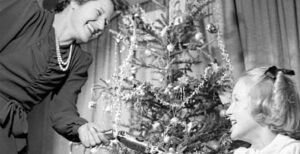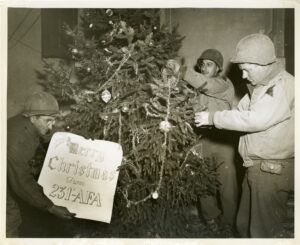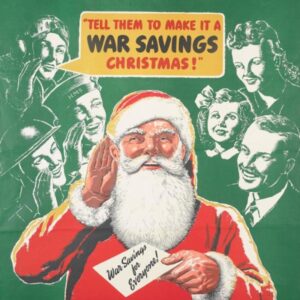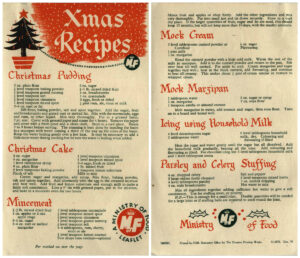In today’s #ForgottenFriday we are looking into a World War Two Christmas, and what may have been typical at the time!
Imports
Britain was at war and supplies were becoming scarce. The ships of the Merchant Navy were under attack from German U-Boats at sea and rationing was introduced on 8th January 1940. At first it was just bacon, butter and sugar that were rationed but by 1942 many other foods, including meat, milk, cheese, eggs, and cooking fat were also on ration. Those with gardens in urban areas were encouraged to ‘grow their own’ and many families also kept chickens. In cities, families were encouraged to use flowerbeds as their source to grow vegetables for the kitchen. Some people kept pigs or joined ‘pig clubs’ where a several people would club together and rear pigs, often on a smallholding.
There were constant worries for those loved ones serving in the armed forces, away from home at the time of year when many families would gather to celebrate. Children may have also been evacuated away from home and many people would be spending Christmas in air raid shelters rather than in their own homes, which must have been incredibly hard for mothers who were at home working in the forces too.

A Rationed Christmas
Today it is hard to imagine, with the conspicuous consumption and commercialisation of a modern Christmas, how families coped during World War Two. However, despite all these challenges, many families managed to put together a very successful festive celebration. Using materials and resources they had to hand.
Although the Blackout meant there were no Christmas lights in the streets, homes were still enthusiastically decorated for the festive season. Cut-up strips of old newspaper made very effective paper chains, holly and other garden greenery which was foraged adored the pictures on the walls, and pre-war decorations and glass baubles decorated make-do Christmas trees.
The Ministry of Food had tips for making these simple decorations even more festive: ‘A Christmassy sparkle is easy to add to sprigs of holly or evergreen for use on puddings. Dip your greenery in a strong solution of Epsom salts. When dry it will be beautifully frosted.’

Presents
Presents were often homemade and as wrapping paper was scarce, gifts were wrapped in brown paper, newspaper, or even small pieces of cloth. Scarves, hats, and gloves were hand knitted using wool unravelled from old jumpers that had been outgrown by members of the household. War bonds were bought and given as gifts, also helping the war effort. As the Ministry of Food encouraged pickling and making jam, homemade chutneys, and jams very welcome presents. They were easily made and had a great shelf life. Practical gifts were also popular, particularly those associated with gardening, for example homemade wooden dibbers for planting. According to many primary sources, the most popular Christmas present in 1940 was soap!

Rabbit for Dinner!
Christmas dinner became a triumph of ingenuity when food was on ration. Many families would hoard their rations for months prior to the big day. Tea and sugar rations were increased at Christmas which helped families to create a festive meal. Turkey was not on the menu in the war years; if you were lucky, you might have goose, lamb, or pork. A rabbit or maybe a home-raised chicken was also a popular alternative for the main meal, accompanied by plenty of home-grown vegetables. Dried fruit became more difficult to come by the Christmas pudding and Christmas cake would be bulked out with breadcrumbs and even grated carrot.[1]

Entertainment in the home was provided by the wireless radio and of course, family and friends. Board games such as Ludo were very popular when friends and family got together over the Christmas period. Some of the most popular Christmas songs which were sang, date from the war years: ‘White Christmas’ and ‘I’ll be Home for Christmas’ for example.
Looking back with modern eyes at these frugal, ‘make-do-and-mend’ war years, it is easy to feel sorry for those spending Christmas on the ration. A lot of people during the war were very fond of the traditional family time spent together. The simpler wartime Christmas was for many, a return to simple joys; the company of family and friends, and the giving and receiving of gifts made with care by loved ones.
[1] https://www.historic-uk.com/CultureUK/Christmas-in-World-War-Two/#:~:text=With%20rationing%2C%20Christmas%20dinner%20became,have%20goose%2C%20lamb%20or%20pork.

